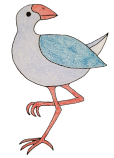If you'd told me two years ago I’d write a novel, I would have laughed. Absolutely no way would I write a novel, no way could I write a novel. Well, except it turns out, by accident.
SATELLITE DISH RECEIVER TEARDOWN
Welcome to part 3 of the satellite dish teardown. Today we will be looking at the receiver of the satellite dish that has spent the last 10 or so years being an ornament on my house. This will include looking at how the unit was sealed, the key components of the circuit board and the layout of the circuit board. If you want to read part 1 where we look at the dish installation as a whole or part 2 where we look at the feed horn please have a look at: https://swamphen.co.uk/new-blog/2019/6/24/satellite-dish-teardown and https://swamphen.co.uk/new-blog/2019/7/1/satellite-dish-feed-horn-teardown
SATELLITE DISH TEARDOWN
So, this weekend was a perfectly normal weekend at the home of Swamphen Enterprises. It was one of those weekends spent sorting out all those things in the house you never quite get round to doing. One of these was deal with the satellite dish that the previous owner had left attached to the wall, but with the cable cut. This satellite dish has been acting as a decoration for the last 10 or so years, and it was time for this to end. You will be familiar with this dish, as it starred as one of my #AntennaInTheWild tweets and in my reflector blog post about how a perforated dish can act as a solid piece of metal: https://swamphen.co.uk/new-blog/2019/6/10/when-a-grid-becomes-a-solid. Having removed it from its long-held position, it was only fair to do a teardown of it!
WHEN A GRID BECOMES A SOLID
How can a grid act as a reflector? Doesn’t make much sense when you think of it, but when we are talking about electromagnetic radiation, they definitely can. Probably the most common example you see is in satellite TV offset reflector antennas, but you also see it in radio telescopes. The dish is not made from a solid structure, it’s a mesh or has holes in it, and yet it can easily reflect the electromagnetic radiation to the receiver at the focal point of the parabaloid. There are other structures that you can make that are not solid metal, but act as a radio frequency mirror.
THE MORE FEEDHORNS THE BETTER
Feed horns have always held a fascination for me, just make a bit of shaped metal and you can control electromagnetic radiation. In my opinion, a great super power to have! However, when you put several feed horns together you can create something even more powerful and informative.
A feed horn is a type of horn antenna, which means it is formed by flaring the sides of metal waveguide into a horn like shape thus creating a controlled beam of radio waves. A monopulse system is one that sends out multiple overlapping beams at the same time. Typically, a monopulse antenna is an antenna array which is symmetrical about boresight.
LET’S TALK ABOUT REFLECTOR ANTENNAS
I like all antennas, but if I had to pick a special favorite it would definitely be the reflector antenna. I think it is so amazing how they can just move the radio frequency waves (RF) around in space using a shaped lump of metal and manipulate it into something useful. They are also the antennas I have spent the most amount of time designing, getting manufactured, testing and interpreting the results of. However, they are probably not the first antenna that comes to mind for most people, so read on and learn more about them.






